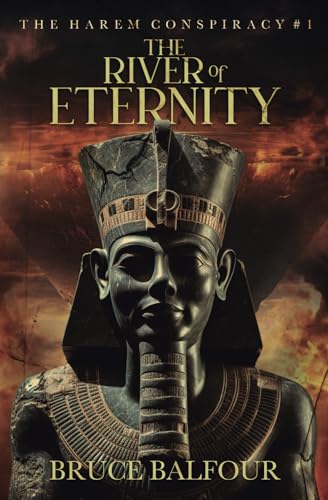The River of Eternity: A Novel of Ancient Egypt
The River of Eternity is the first in a sequence of two books that treat the story of the conspiracy to assassinate Ramesses III, who is widely considered to be the last of the great Pharaohs of the New Kingdom. The “Harem Conspiracy” is so named because its principal figure was one of the pharaoh’s secondary wives, Tiye, who attempted to place her son, Pentawere, on the throne instead of Ramesses’ chosen heir. Balfour tells his story largely through the eyes of young Ray, a scribe’s son who has been raised with the children of Ramesses. However, there are several secondary narratives, including one centered on the sheltered princess Tentopet, who is trafficked when forced to pursue a career as a dancer after fleeing the court.
Balfour’s research is impeccable, and readers will savor the details about ancient Egypt’s funerary practices, food and drink, and personal hygiene. But the story breaks no new ground in the reader’s understanding of ancient Egypt, which is portrayed as a rigid theocracy centered on the divinity of Pharaoh. Nor does Balfour break new ground in his characters: Ray and Tentopet are typical adolescents journeying from innocence to worldliness. Finally, the novel’s structure may be off-putting to many: Its small scale feels at odds with the sweep of grand events it portrays, and a reader is likely to feel disappointed in this volume if they are not committed to reading its sequel.










